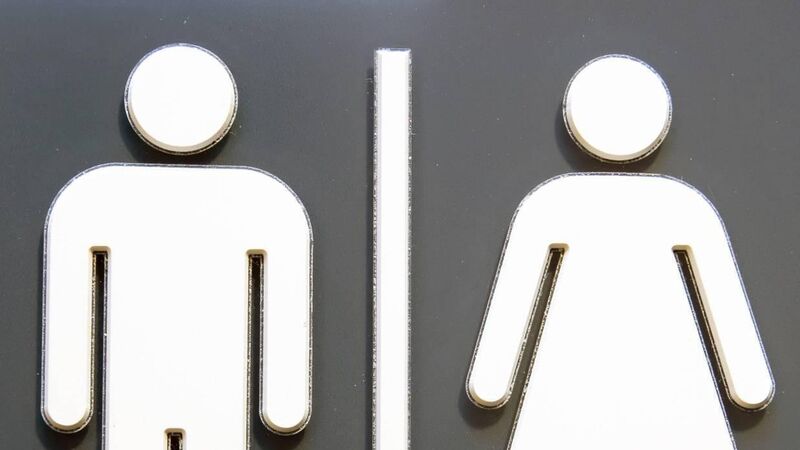Cork Views: 'Us ladies want our own public toilets - not the unisex option'

You can’t really avoid unisex toilets on airplanes or trains or petrol stations, but I’d been out for a meal in a new and rather nice restaurant.
And I needed to use the ladies.
Except there wasn’t one. To my dismay, the sign on the door of the loo said it was a gender-neutral facility.
As I hesitated outside the door, a tall, young man came out zipping up his jeans.
I immediately returned to my table.
Now, as we all know, needs must when the devil drives.
If you’re on a long flight or a lengthy train journey or a big road trip and you just have to go, you’ll grit your teeth and use that unisex toilet.
Unisex public toilets can be of benefit to transgender populations and people outside of the gender binary.
Certainly, a unisex public toilet facility would be a relief for mothers out and about with sons who may be too old to accompany their mums into the all-female toilet, but who are still a bit young to have to navigate an all-male public toilet alone.
In that instance, a unisex toilet would be handy. But only, I would like to emphasise, in addition to single-sex toilets.
It’s also argued that unisex loos could reduce the long bathroom queues that are such a traditional feature of female toilets.
However, in this context I read somewhere that the advice of public health experts is actually that there should be two female toilets provided for every one male toilet.
It’s not rocket science - the long queues outside female loos in restaurants, theatres, concerts or weddings are proof that women, for various reasons, do need to use the toilet more often than men.
Practically speaking, therefore, is there not a risk that having only gender-neutral toilets would actually result in fewer facilities for women?
Truth be told, many women are not all that comfortable about sharing public loo facilities with strange men.
Many are actively repulsed by the idea of having to sit to pee on a loo seat that some badly-brought-up male may have left down and carelessly sprayed.
Many women would be uncomfortable about entering a large public block of unisex toilets alone.
Then there’s the hygiene angle. You only have to look at the state of many male-only public toilets. Say no more.
The drive to install unisex toilet facilities in schools is of particular concern.
Surely, there is a need for all children and teenagers, particularly girls, to feel safe and to have privacy and dignity in the toilet?
There is research to show that unisex toilets make schoolgirls feel unsafe and uncomfortable.
Fears have been voiced – to my mind, justifiably - that the availability of only unisex toilets on the campuses of mixed schools could potentially result in female students avoiding using the loo altogether.
Research in the UK has shown that the trend for mixed-sex loo facilities in schools has left some girls feeling unsafe, uncomfortable and confronted by period-shaming comments from boys. It found that some girls would rather suffer the discomfort of a full bladder than run the gauntlet of using the school’s unisex toilets.
The research even found that some girls stopped drinking liquid at school, so that there would be quite literally less pressure to visit the unisex loo.
Tell me, how is any of that ‘inclusive’?
We’re enthusiastically introducing something that has clearly not proved successful over there.
The UK has obviously learned that unisex toilet facilities are not working out all that well, and so it’s returning to the traditional set-up with the option of a unisex facility where possible.
While our Department of Education is now enthusiastically advocating a unisex toilet design that dispenses with traditional, separate boys’ and girls’ toilets in favour of private cubicles opening into some class of a common wash-basin area.
Where, let’s face it, some boys will enjoy standing around sniggering; they will crack jokes and make girls uncomfortable about using the toilet, which, eventually, inevitably, the girls will start to avoid.
Look. Let’s stop all the political correctness and be brutally realistic here about the way boys and girls can behave.
The Department of Education has claimed that this unisex toilet concept is “inclusive” and that it encompasses a more “pluralistic, multi-cultural society catering equally and fairly for the needs of all”.
But how can it be that, if it leaves girls feeling unsafe and vulnerable? And at risk of being shamed for what is a natural part of their physical development?
My bet – and only time will prove this right or wrong - is that these new ‘inclusive’ and ‘pluralistic’ blocks of unisex toilets will gradually become all-male territory as girls either stop using the toilets altogether, or else stand in long queues for whatever distant, stand-alone toilet the lads don’t bother with.
In all this talk about inclusiveness and pluralism, what about a girl’s rights to safety, privacy and dignity?
Ireland – and the Department of Education – is behind the curve.
Instead of doing the research and actually taking a lesson from the mistakes made elsewhere, we unquestioningly trot in their wake, making the exact same mistakes they made… and our girls and women suffer.
Ah. What’s new?







 App?
App?




